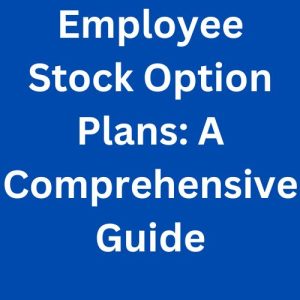
How to Establish Investment Criteria in 5 Steps
Introduction to Investment Criteria
Welcome to Hub World, we will be discussing about investment criteria in 5 steps such as define your investment goals, determine your investment size and type, identify target industries and markets, establish financial and operational benchmarks, and create a checklist for competitive advantages.
Step 1: Define Your Investment Goals
Short term vs Long term Objectives
The short term objectives are to hit financial milestones or increase their income in less than a year of a quick returns on investment including setting up a down payment on a house or funding a vacation and saving up for emergency fund. It needs continuous supervision or opportunities of potential investments and meticulous demand planning. The short term goal is to achieve a greater magnitude for the future, which serves as a stepping stones on the financial objectives. While the long time objectives should be your top priorities to keep your finances stable and make money with decision that pay off financially for businesses and individuals. It is essential for retirement savings or paying for school or purchasing a home and starting a business using investment strategy on methodical approach and purposeful measurable objectives.
Risk tolerance assessment
The risk tolerance assessment on short term objectives is used to determine the level of danger on educated choices and risk mitigation to determine the unpredictability or comfort with volatility. Measured risks are taken in short term objectives for capitalizing of opportunities and prudent investing to successfully achieve the short term objectives. While the risk tolerance assessment on long term objectives is to evaluate uncertainties and handle potential risks which is essential for the desired outcome without jeopardizing the ability to determine a risk tolerance. It ensures the use of informed decision-making or strategy formulation and effective allocation of resource for both individual and organizational goals on financial resources or market conditions and industry dynamics. The risk management for long term responsibility is in line with the ambitious long term objectives.
Desired returns and timeline
Desired returns on short term objectives is known for improving efficacy or increasing output and financial gains on goal while timeline is referred to as the waiting time for the returns to occur during the estimated duration. In order to achieve and set reasonable goals, the desired return and timeframe are aligned also keeping yourself away from excessive stress is essential for reality in check and keeping aspiration. While achievement over time for an organization or individual profit or level of growth is referred to as the desired return on long term objectives using activities and necessary strategies. Timeline means making plans and setting realistic goals to evaluate progress or create urgency and achieving the desired returns within the time range. The growth and success are sustained by maintaining balance which can be achievable and challenging for both goals.
Step 2: Determine Your Investment Size and Type
Equity Investment range
Equity investment range has a wide investing options on enterprises of high risk growth to blue chip equities of low risk on large cap or mid and small equities. The equity funds on specific sector are from a particular industry on a tailored investment including sector preferences or investment goals and risk tolerance on investors should be taken into consideration.
Types of Investments
Stocks refers to the failure or success of the company as investors partake in investing in stocks.
Bond issuers are known as interest payment in exchange for loans provided by the corporations or governments.
Real estate investing refers to rental income or capital growth for purchasing residences.
Mutual fund is known as bonds or stocks and other assets of diverse portfolio which is professionally managed.
Alternative investments are known as peer-to-peer lending or cryptocurrencies and commodities for their potential benefits and its own risks.
Control preference (majority vs minority stakes)
The minority stakes refer to how the operation on the company shares is influence by the limit of holding a smaller percentage also it can lead to conflict and obstruction of decision-making including collaboration and diversity due to the equitable power allocation. While majority stakes refer to diversity and originality of autonomous decision-making when more than 50% of the shares is owned by you which gives you a greater decision-making power.
Step 3: Identify Target Industries and Markets
Analyzing growth potential and market trends
Analyzing growth potential and market trends are revealed through the market patterns for behavior or desires and consumer preferences in order for customer expectations to be met on the products and services introduce by the businesses. Technological advancements or competitiveness and market saturation are assessed through industry features for evaluation procedure on the growth potential. Creating a marketplace or identifying low competition market niches can be achieved through clients and expanding of market share. For a better route to success in the future and competitive advantage can be done through an in depth analysis on the market trends.
Geographical consideration
Geographical consideration have significant effect on the potential customers or infrastructure and influences access to resources on business success also abundance of natural resource makes companies thrive because they rely on it. Trained workers that are required for businesses are beneficial to universities and technical schools. The impact on the markets are from the climate or cultural preferences and purchasing power as geographical factors also these factors must be evaluated by businesses to ensure they are appropriate for their area.
Sector-specific opportunities.
The sector specific opportunities entail the target market and specific sectors with opportunities the companies capitalize on while the market research is facilitated by the changes in behavior of the customers or technological advancements and emerging trends. Strategic positioning can resulting in creating new revenue streams or new segments on reaching markets and outperforming competitors. Globalized economy are increasing due to the long term success and sustainability which are crucial for the sector specific possibilities.
Step 4: Establish Financial and Operational Benchmarks
Key financial metrics
Key financial metrics is used to provide information on operational efficacy and financial soundness of businesses for operational and evaluating financial standards. The gross profit margin and net profit margin are from the profitability ratios on the amount of profit made while in liquidity, short term commitments are assessed from the quick and current ratios. Asset usage and operational efficiency information are gotten from inventory and asset turnover from efficiency ratios. Operational goals and financial progress are tracked, or realistic benchmarks are created, and smart decision-making are made using the key financial metrics.
Operational efficiency indicators
Operational efficiency indicators is essential for the operational and evaluation of financial benchmarks for information on efficiency and effective procedure. Financial measurements based on the return on investment or profit margin and cost per unit while failure rate or cycle time and productivity ratio are examples of operational measures. Increase in productivity or streamline procedures and identifying problem area are used for tracking. Assessing performance and continuous improvement is essential also comparing against industry standards.
Scalability and growth potential
Scalability and growth potential makes sure that without losing efficiency in an increasing number of customers, it can be handled by the business also it is essential for scalable processes and systems for revenue generation and efficient operations. It ensures steady growth and expansion in market share which is crucial for efficiency or profitability or operational performance and assessing of financial health. The long term success is based on the making informed decisions or implementation of growth plans and identifying areas for improvements.
Step 5: Create a Checklist for Competitive Advantages
Unique selling propositions
Unique selling propositions is crucial to differentiate from competitors on the product or services also ensuring the value and brand benefits information reach the potential customers. It is used to retain and attract customers including making a business stand out in a crowded market either on fair pricing or unique features or exceptional customer service and high quality. Unique selling proposition is used to influence clients and gain a competitive edge in the market trend among competitors.
Barriers to entry
Barriers to entry is used among consumers for strong brand loyalty or limited channel distributions or strict regulations and high initial costs. The technological advancement or economies of scale and patents can be delayed by the efficiency and new competitor’s innovation. Higher prices or fewer consumer options or less competition and low market standard are caused by these barriers.
Sustainable market position
Sustainable market position is used to produce quality work and delivering value to consumers to gain advantage over competitors. It ensures the ongoing shift in market conditions through adaptation and innovation including establishing relationships with the stakeholders. Sustainable market position entails the use of strategic planning or effective operations or capable leadership and strong corporate culture.
READ MORE ON Investment Criteria
SEE MORE ON Employee Stock Option Plans: A Comprehensive Guide

